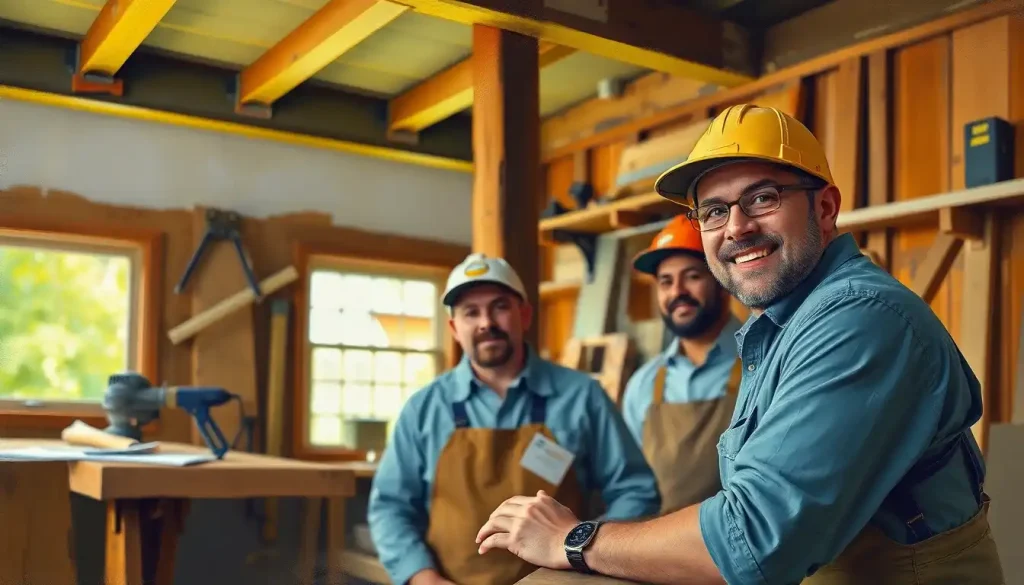Wealth without wisdom can vanish in an instant, but a well-crafted legacy endures for generations. This timeless truth underscores the importance of thoughtful estate planning, particularly through the use of family trusts. These powerful financial instruments have long been a cornerstone of wealth preservation and generational transfer, offering a blend of protection, flexibility, and control that few other tools can match.
Family trusts, at their core, are legal arrangements designed to hold and manage assets for the benefit of family members. They’ve been around for centuries, with roots tracing back to medieval England. Today, they’ve evolved into sophisticated vehicles that can adapt to the complex needs of modern families and their financial landscapes.
But what exactly makes family trusts so special? Why do financial advisors and estate planners often recommend them to their clients? Let’s dive into the world of family trusts and uncover the secrets behind their enduring popularity.
Understanding Family Trusts: The Basics
Before we delve into the nitty-gritty, let’s break down what a family trust actually is. Think of it as a protective bubble around your assets. You, as the creator (or “settlor”), place your assets into this bubble. Then, you appoint someone trustworthy (the “trustee”) to manage these assets according to your wishes, for the benefit of your chosen family members (the “beneficiaries”).
There’s not just one type of family trust, though. Oh no, that would be far too simple! There’s a veritable smorgasbord of options to choose from, each with its own quirks and perks. You’ve got your revocable trusts, which you can change or cancel at any time. Then there are irrevocable trusts, which are more like tattoos – once they’re done, they’re pretty much permanent. Some trusts are designed to skip a generation (aptly named generation-skipping trusts), while others focus on specific goals or beneficiaries.
The key components of a family trust are like the ingredients in a gourmet recipe. You need the right mix to create something truly special. These ingredients include the trust document (which spells out the rules), the settlor (that’s you, the chef), the trustees (your sous chefs), and the beneficiaries (the lucky diners). Each plays a crucial role in making the trust work as intended.
Now, if all this talk of settlors and trustees is making your head spin, don’t worry. Family trusts for dummies would explain it like this: Imagine you have a treasure chest. You decide who gets what from the chest, when they get it, and under what conditions. You then hand the key to someone you trust, giving them instructions on how to distribute the treasure. That’s essentially what a family trust does, just with fancier legal jargon and more paperwork.
Benefits of Establishing a Family Trust: More Than Just a Rich Person’s Toy
So, why go through all this trouble? Well, family trusts aren’t just for the Rockefellers and Kardashians of the world. They offer a range of benefits that can be valuable for many families, regardless of the size of their estate.
First and foremost, asset protection. A properly structured trust can act as a fortress, shielding your assets from creditors, lawsuits, and other potential threats. It’s like having a financial bodyguard that never sleeps.
Then there’s the tax angle. While trusts aren’t magical tax-erasing machines (sorry to burst that bubble), they can offer significant tax advantages. Depending on how they’re set up, trusts can help reduce estate taxes, income taxes, and even gift taxes. It’s like having a savvy accountant built right into your estate plan.
Estate planning and wealth transfer become smoother with a family trust. Instead of leaving your heirs to navigate the often lengthy and costly probate process, a trust can facilitate a quicker, more private transfer of assets. It’s the difference between a smooth handoff and a messy fumble.
Control is another big selling point. With a trust, you can specify exactly how and when your assets are distributed. Want to ensure your grandkids use their inheritance for education? A trust can do that. Worried about a spendthrift child blowing through their share? A trust can help there too. It’s like being able to guide your family’s financial future from beyond the grave (in a non-creepy way, of course).
Lastly, privacy. Unlike wills, which become public record when probated, trusts generally keep your financial affairs under wraps. It’s the estate planning equivalent of having a good pair of curtains – keeping prying eyes out of your business.
Setting Up a Family Trust: A Journey, Not a Destination
Creating a family trust isn’t a decision to be made lightly over your morning coffee. It’s a journey that requires careful thought, planning, and usually, professional guidance.
The first step is determining the trust’s purpose. Are you primarily concerned with asset protection? Tax minimization? Providing for a special needs child? Your goals will shape every aspect of your trust, from its structure to its provisions.
Choosing trustees is another critical decision. This person (or persons) will be responsible for managing the trust according to your wishes. It’s a bit like choosing a babysitter, except instead of watching your kids for a few hours, they’re managing your life’s work for years or even decades. You want someone who’s not only trustworthy but also financially savvy and good at following instructions.
Drafting the trust deed is where the rubber meets the road. This document is the blueprint for your trust, outlining everything from how assets should be managed to when and how distributions should be made. It’s a bit like writing a constitution for your family’s wealth.
Once the trust is set up, you’ll need to transfer assets into it. This process, known as “funding” the trust, is crucial. A trust without assets is like a car without fuel – it might look nice, but it’s not going anywhere.
For those feeling overwhelmed, here’s a simplified setup process: Decide what you want to achieve, choose someone you trust to manage it, work with a lawyer to create the trust document, and then move your assets into the trust. It’s a bit like setting up a very fancy piggy bank for your family.
Managing and Maintaining a Family Trust: The Gift That Keeps on Giving (Work)
Setting up a trust is just the beginning. Managing and maintaining it is an ongoing process that requires attention and care.
Trustees have a big job on their hands. They’re responsible for managing the trust’s assets, making distribution decisions, keeping accurate records, and ensuring the trust complies with all relevant laws and regulations. It’s a bit like being a combination of CEO, accountant, and legal eagle for the trust.
Record-keeping is crucial. Every transaction, every decision, every distribution needs to be documented. It’s not the most glamorous part of trust management, but it’s essential for maintaining the trust’s integrity and avoiding potential legal headaches down the road.
Distributing income and assets is where the rubber meets the road for beneficiaries. This process needs to be handled carefully, balancing the needs of current beneficiaries with the long-term goals of the trust. It’s a bit like being Santa Claus, but with more paperwork and potential family drama.
Regularly reviewing and updating the trust is also important. As laws change, family circumstances evolve, and financial landscapes shift, the trust may need to be tweaked to remain effective. It’s like giving your estate plan a regular check-up to keep it in top shape.
Potential Drawbacks and Considerations: No Rose Without a Thorn
While family trusts offer many benefits, they’re not without their potential downsides. It’s important to go into trust planning with eyes wide open.
Cost is one consideration. Setting up and maintaining a trust isn’t free. There are legal fees for drafting the trust documents, potential trustee fees for managing the trust, and ongoing expenses for things like tax preparation and investment management. It’s a bit like joining an exclusive club – the benefits can be great, but there’s a membership fee.
Loss of direct control over assets can be a stumbling block for some. Once assets are placed in an irrevocable trust, they’re no longer yours to control directly. This can be a tough pill to swallow for those used to having their hands on the financial steering wheel.
Complexity is another factor to consider. Trusts can be intricate beasts, with lots of moving parts and legal nuances. This complexity can make them challenging to understand and manage, especially for those without a financial or legal background. It’s a bit like trying to assemble a piece of IKEA furniture with instructions written in legalese.
Family conflicts can also arise. Decisions about who gets what, when, and how can stir up long-simmering family tensions. It’s like Thanksgiving dinner discussions about politics, but with money on the line.
Despite these potential drawbacks, for many families, the benefits of a well-structured trust far outweigh the costs and complexities. It’s all about finding the right balance for your unique situation.
The Big Picture: Why Family Trusts Matter
As we wrap up our journey through the world of family trusts, it’s worth stepping back to look at the bigger picture. Why do these financial instruments matter in the grand scheme of things?
Family trusts are more than just tax-saving devices or asset protection tools. They’re vehicles for preserving and passing on not just wealth, but values, goals, and legacies. They allow you to extend your financial influence beyond your lifetime, guiding and supporting your loved ones even when you’re no longer around to do so in person.
In a world where financial landscapes are constantly shifting, where tax laws change with each new administration, and where the future is always uncertain, family trusts offer a measure of stability and control. They’re a way of saying, “No matter what happens, I’ve done my best to provide for and protect my family.”
For those considering a family trust, the key takeaways are clear: Start planning early, think carefully about your goals, choose your trustees wisely, and don’t be afraid to seek professional help. Remember, this isn’t just about money – it’s about your family’s future.
And speaking of professional help, that’s perhaps the most important piece of advice we can offer. While this guide provides a solid overview of family trusts, it’s no substitute for personalized professional advice. Every family’s situation is unique, and the world of trusts is complex and ever-changing. An experienced estate planning attorney or financial advisor can help you navigate these waters and create a trust that truly meets your family’s needs.
In the end, a well-crafted family trust is more than just a legal document or a financial strategy. It’s a legacy, a gift to your loved ones, and a powerful tool for ensuring that the wealth you’ve worked so hard to build continues to benefit your family for generations to come. Whether you opt for a bare trust or a more complex arrangement like an accumulation trust, the key is to align your choice with your family’s unique needs and goals.
So, as you contemplate your financial future and the legacy you want to leave behind, consider the role a family trust might play. It could be the key to turning your hard-earned wealth into a lasting family legacy. After all, wealth without wisdom may vanish in an instant, but a well-crafted legacy – like a thoughtfully structured family trust – can indeed endure for generations.
References:
1. Choate, N. (2021). Life and Death Planning for Retirement Benefits. Ataxplan Publications.
2. Sitkoff, R. H., & Dukeminier, J. (2017). Wills, Trusts, and Estates. Wolters Kluwer Law & Business.
3. Blattmachr, J. G., & Gans, M. M. (2019). The Circular 230 Deskbook. Practising Law Institute.
4. Zaritsky, H. (2019). Tax Planning for Family Wealth Transfers: Analysis With Forms. Thomson Reuters.
5. Oshins, S. (2020). Asset Protection: Concepts and Strategies for Protecting Your Wealth. McGraw-Hill Education.
6. Esperti, R. A., & Peterson, R. L. (2016). Protect and Enhance Your Estate: Definitive Strategies for Estate and Wealth Planning. McGraw-Hill Education.
7. Internal Revenue Service. (2021). “Abusive Trust Tax Evasion Schemes – Facts (Section I)”. Available at: https://www.irs.gov/businesses/small-businesses-self-employed/abusive-trust-tax-evasion-schemes-facts-section-i
8. American Bar Association. (2021). “Estate Planning FAQs”. Available at: https://www.americanbar.org/groups/real_property_trust_estate/resources/estate_planning/estate_planning_faq/
9. Financial Industry Regulatory Authority. (2021). “Revocable Trusts”. Available at: https://www.finra.org/investors/learn-to-invest/types-investments/retirement/estate-planning/revocable-trusts
10. National Association of Estate Planners & Councils. (2021). “What is Estate Planning?”. Available at: https://www.naepc.org/estate-planning/what-is-estate-planning












Would you like to add any comments? (optional)